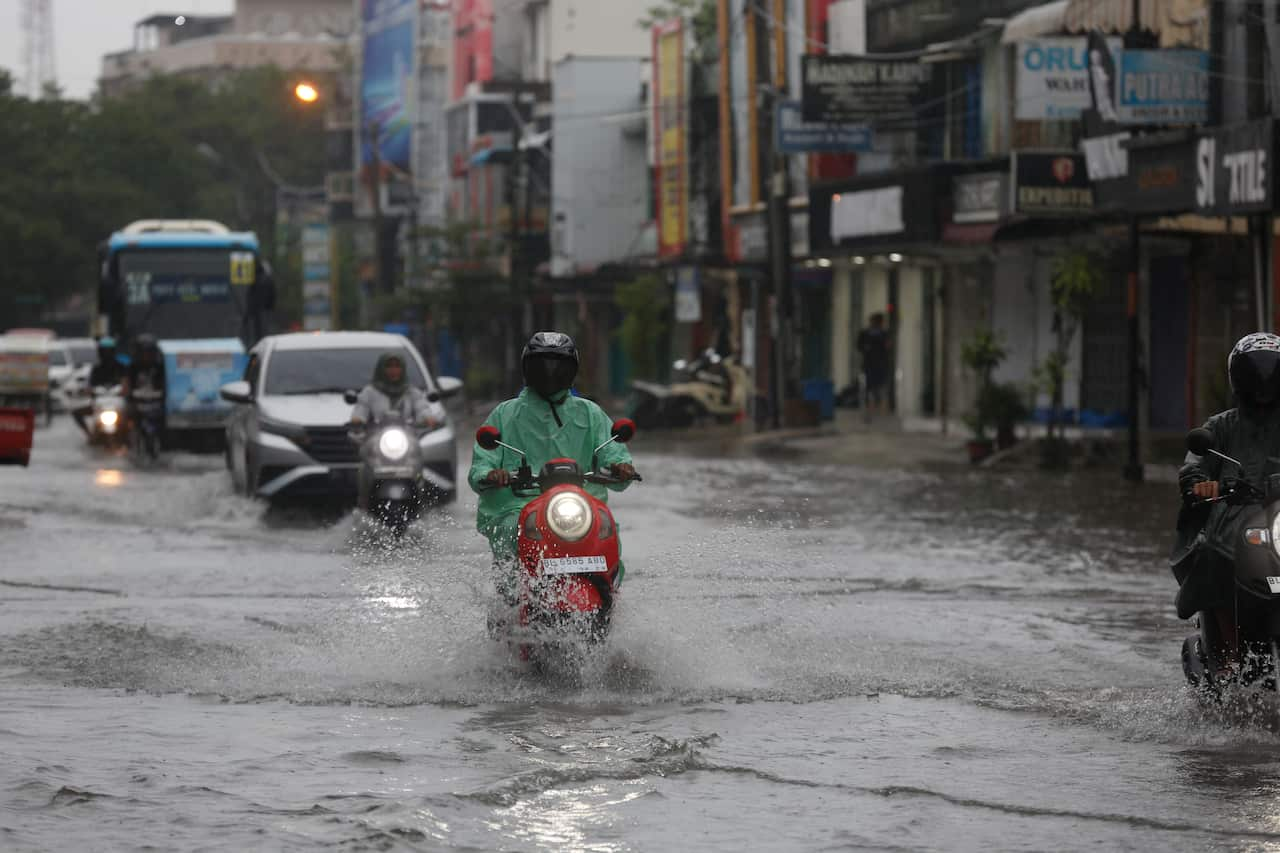Days of devastating flooding across Southeast Asia have killed more than 250 people across Indonesia, Thailand and Malaysia, authorities said on Friday.
Heavy monsoon season rains paired with a tropical storm system inundated areas across the three countries, stranding residents on roof tops and cutting off entire communities.
In Indonesia, authorities were struggling to reach worst-affected areas on Sumatra island, while authorities at a southern Thailand hospital brought in refrigerated trucks to store bodies after the morgue exceeded capacity.
In West Sumatra, 53-year-old Misniati described a terrifying battle against rising floodwaters to reach her husband at home.
Returning from early morning prayers at a mosque, "I noticed the street was flooded."
"I tried to run back to my house to tell my husband, and the water was already reaching my waist," she told Agence France-Presse.
Battling currents that nearly knocked her off her feet, she arrived home to find the water at chest level.
"We didn't sleep at all last night, we just monitored the water," said Misniati, who only uses one name.
Officials on Sumatra said flooding and landslides this week have killed at least 111 people, with nearly 100 more missing.

Floods and landslides brought on by Tropical Cyclone Senyar have killed at least 94 people in Indonesia. Source: EPA / Hotli Simanjuntak
Access to some areas and communication was still cut off, he told AFP.
"Hopefully, the weather will clear up so we can move the helicopter to the (worst-hit) locations."
In the Indonesian island's Aceh province, receding waters left behind mud that buried cars almost up to their windows.
More rain is forecast for much of Sumatra, though the intensity is expected to ease, officials said.
'Nothing I could do'
Among the hardest-hit areas in the region is southern Thailand, where flooding left residents of Hat Yai clinging to rooftops awaiting rescue by boat.
At least 145 people have been killed across the country's southern provinces, government spokesperson Siripong Angkasakulkiat said Friday, as receding floodwaters allowed a clearer picture of the disaster.
Most of those are concentrated in Songkhla province, where authorities at the Songklanagarind Hospital said they had no more room to receive bodies and were now relying on refrigerated trucks.
"The morgue has exceeded its capacity, so we need more," Charn, a morgue official who only gave his first name, told AFP.

Heavy rains have caused widespread flooding across southern Thailand. Source: EPA / Royal Thai Army
Hat Yai residents described floodwaters rising rapidly.
"The water rose to the ceiling of the second floor," Kamban Wongpanya, 67, told AFP on Thursday, explaining that she had to be rescued by boat.
Shop owner Chayaphol Promkleng thought at first that his business would be spared because flooding was "only ankle-deep".
He returned the following day to find his shop "flooded to waist-deep level".
"There was nothing I could do. I left the shop to save my life."
In Malaysia, two people have been killed in flooding caused by heavy rain that left stretches of northern Perlis state under water.
'Extreme weather'
The annual monsoon season, typically between June and September, often brings heavy rains, triggering landslides and flash floods.
But a tropical storm has exacerbated conditions, and the tolls in Indonesia and Thailand rank among the highest in flooding events in the countries in recent years.
Climate change has impacted storm patterns, including the duration and intensity of the season, leading to heavier rainfall, flash flooding and stronger wind gusts.
A warmer climate holds more moisture, producing more intense rain events, while warmer oceans can turbocharge the strength of storm systems.
"Climate scientists have already warned that extreme weather events ... will continue to worsen as temperatures increase," said Renard Siew, climate change advisor to the Centre for Governance and Political Studies in Malaysia.
"That is exactly what we have been seeing."
Share



